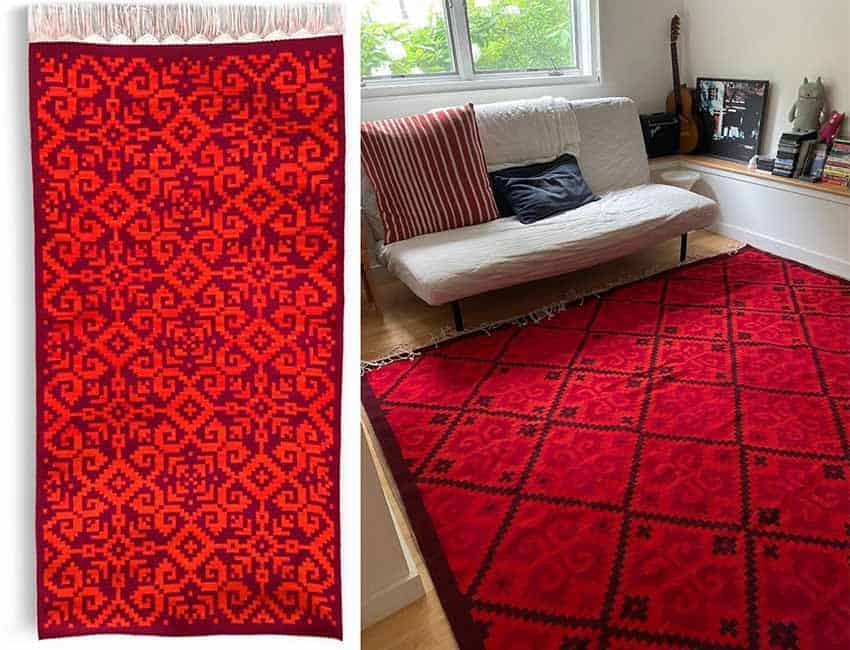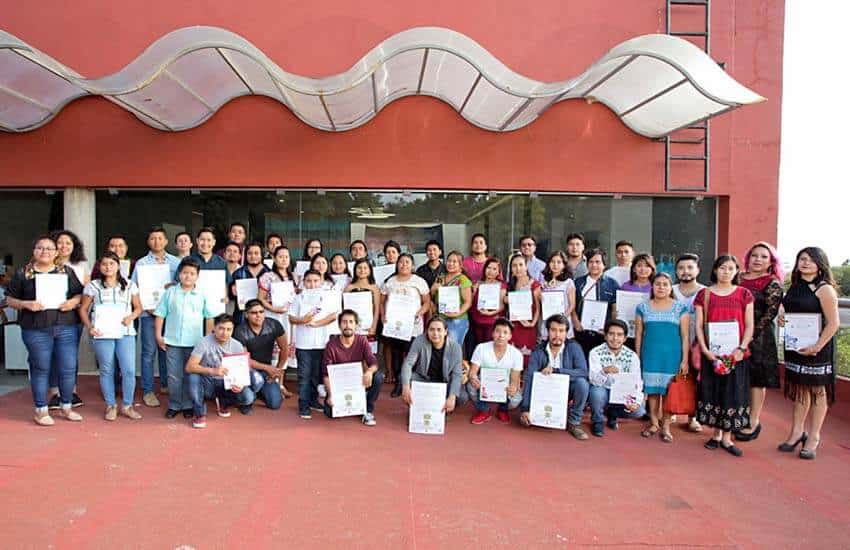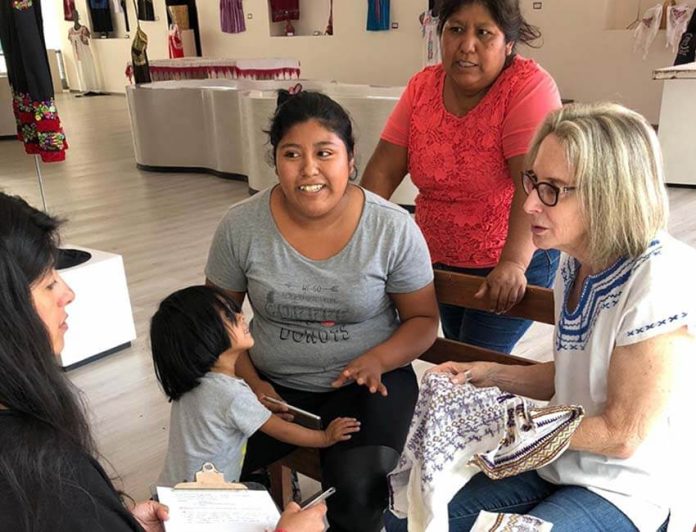It shouldn’t be surprising that most of Mexican handcrafts’ biggest fans are from the United States. Not only are we geographically close to Mexico, the U.S. has the memory of essential craft arts like quilting to realize what we have lost – and what Mexico struggles to preserve.
Handcrafted items can be found in almost all of Mexico’s states, but none have managed to conserve the range and quality that the highly indigenous state of Oaxaca has. Serious collectors make regular pilgrimages, and a well-developed tourist industry introduces these fine works to new fans. Despite all this, the future of handcrafts is always precarious, as the modern world offers other opportunities to young people.
Arden Rothstein fell in love with Oaxaca in 1961 as a teenager. Although she returned to the States to pursue a career in psychiatry and academia, her love for Oaxaca never waned. With her daughter Anya, she published a book called Mexican Folk Art from Oaxacan Artist Families (2002, 2007, Schiffer books). This book is unique as it lists the contact information of the profiled artisans, which has led to new buyers showing up at families’ homes.
The 2006 teachers’ strikes in Oaxaca caused a freefall in tourism — after what was a run-of-the-mill strike over wages eventually involved riot troops, the seizure of broadcast stations all over Oaxaca and a call for the governor to resign. That summer was economically devastating to both tourism and artisans who depend on it. This prompted Rothstein to contact U.S. writers, art historians, educators and more to join together to help.

The result is Friends of Oaxacan Folk Art, FOFA for short. Its focus is on the conservation of Oaxacan handcraft traditions into the future, which means working to attract and support young people who choose to shape wood, textiles, clay, metal and more in traditional and innovative ways.
FOFA gives these young artisans a variety of skills through classes, workshops and field trips related to business English, general and online marketing, tourism and Oaxacan and Mexican art history. Since its start, FOFA has grown its community of recognized young artisans to over 150.
FOFA works primarily with governmental and private organizations both in Mexico and the United States to achieve its goals. Its most valuable ally is the State Museum of Popular Art of Oaxaca (MEAPO) and its director, Carlomagno Pedro Martínez.
Pedro has found working with “his neighbors to the north” highly satisfactory because FOFA has had a great impact on Oaxaca’s youth, as it’s able to give them international reach in terms of clientele and technological skills. The collaboration of the two organizations has given Oaxacan folk arts great prestige both inside and outside of Mexico.
Most of FOFA’s work succeeds because it fits in with the cultures of both countries. In the US, FOFA joins with over 200 loyal members, along with SummerStage in Central Park, the Mexican Cultural Institute, the Art Institute of New York, Los Amigos de Arte Popular, Western Union and others eager to learn about and promote Oaxacan culture.
In Mexico, FOFA has adopted the concept of concursos, events where young Oaxaca artisans enter pieces for judging by noted experts and are awarded prizes. Such events do provide an immediate cash benefit, but the real prize is the recognition that winners receive. Certificates and publications in catalogs open doors for years afterward.
Rothstein notes that many past winners from FOFA’s concursos have been able to move their craft from a sideline to something central in their lives.
FOFA’s young artist competition returns this year with a theme of “Finding Hope Through Art,” a reference to the extreme difficulties of the past two years of pandemic shutdowns. As always, the event is held in collaboration with MEAPO, with a public awards ceremony on August 19, 2022.

This year’s competition is the first held since 2018, as the one scheduled for 2020 was canceled. To compensate, FOFA raised the participation age to 35 to allow for those who might be disenfranchised otherwise.
The pandemic has been the biggest challenge for FOFA and the artisans they serve.
The organization’s efforts previously were focused entirely on projects with long-term benefits, taking advantage of strategies that artisans and their markets were already familiar with. The sudden and dire crises caused by a near-complete shutdown of the economy forced everyone to change gears. “We had to postpone a remarkable number of fantastic projects scheduled for 2020, mourn them and then reinvent ourselves,” says Rothstein.
FOFA began with an online photo exhibition dedicated to the crisis and its effect on artisans. From then on, they have worked to put far more emphasis on helping artisans take advantage of the internet.
FOFA has used its own Instagram page to promote individual artisans, but they remain committed to empowering artists’ development of their own businesses, rather than becoming a reseller of handcrafted goods. The difference was to focus on online sales.
During the past two years, many artisan organizations did not want to do face-to-face projects, but FOFA consultants Lorena de la Piedra Ordaz and Diego Morales Toledo realized that taking the risks were necessary, especially in isolated areas of Oaxaca where both knowledge and internet access is hard to come by.
Today, COVID restrictions have eased, and the concurso is back, but Rothstein says that the experience of the past two years will affect FOFA’s activities for years to come; the internet is here to stay and is now a major focus.
The organization has a well-developed website with online catalogs, newsletters and lists of artisans that anyone can access and, unusually, an extensive directory of artisans. They will also provide help in contacting artisans when necessary.
Oaxaca artisan Monserrat Raymundo Sánchez talks about the kind of support she got through FOFA.
Leigh Thelmadatter arrived in Mexico 18 years ago and fell in love with the land and the culture in particular its handcrafts and art. She is the author of Mexican Cartonería: Paper, Paste and Fiesta (Schiffer 2019). Her culture column appears regularly on Mexico News Daily.
